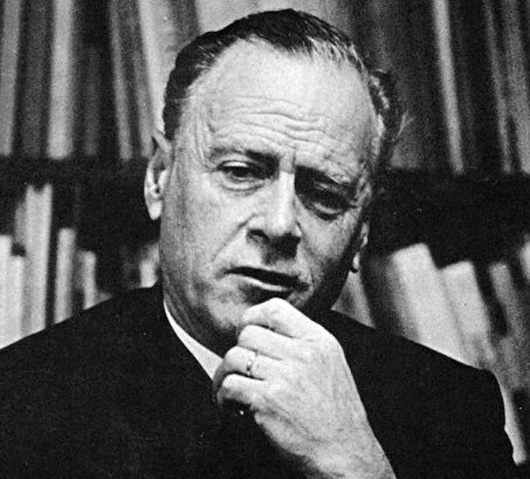 McLuhan argues the value of the poet as the “man of integral awareness.” He says, “The artist can correct the sense of ratios before the blow of new technology has numbed and subliminal groping and reaction begin.” Later he adds, “. . . in experimental art, men are given the exact specifications of coming violence to their own psyches from their own counter-irritants or technology.” (71) McLuhan is referring to the process of inductive reasoning inherent in the creative act that allows the artist (and the most creative scientists) to stand outside the conventions that engage the rest of the world. The attributes he gives the artist are those of knowing how to live among old, new, and future conventions, using them to create his/her authentic life, using them to move comfortably among disciplines, or using both to think outside the boxes of convention and disciplines in life. McLuhan suggests that all creative people have this ability which allows them to avoid becoming irrelevant by new technology or lost in it. He goes on to state that artists have the “exact information of how to rearrange one’s psyche in order to anticipate the next blow from our own extended faculties.” (71) McLuhan is explaining the functioning imagination and its ability to anticipate change. The critical thinking strategy of “connective thinking” (or strategies that assist in making meaning of two or more ideas) has proven to be the lesson most profound to me as a teacher of writing across the curriculum. The skill of making meaning fosters in concrete thinkers the ability to abstract. Students who can abstract begin to think for themselves. The students who succeed in making connections among ideas within and between disciplines are beginning to demonstrate the power of inductive reasoning. Each student goes on to create a meaning-filled world for him/herself. Crafters of general education curricula have been paying diminishing lip service to the arts and humanities and haven’t had a coherent understanding of the value of inductive reasoning. But there may be a glimmer of hope; literary critics such as Perloff are now advising that the wider the “reading in a specified area, the greater the pleasure of a given text and the greater ability to make connections between texts.” (16) An exercise in connective thinking might be one in which a teachers asks students to interpret a magazine advertisement for themselves and then do the same to a painting in an exhibit at a gallery and then read an essay on anthropology interpreting it also. The teacher then might ask the student to make meaning of the three experiences in writing. Practicing this kind of meaning-making, assists each student with actively creating realities for him or herself. Each one of us either creates the world around us or has it created by others consciously or unconsciously. Since our world is filled with competing meanings, it is vital that each student create individual meaning among the competing creations, thereby creating a place in the world. Student who succeed at establishing connections between ideas begin to understand conventions. If every educated person knew how to be comfortable outside conventions, every educated person would have the opportunity to make his/her life a creative project.
0 Comments
Leave a Reply. |
Archives
May 2024
Categories |

 RSS Feed
RSS Feed